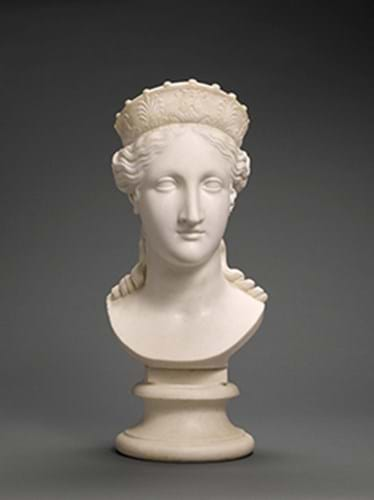
The white marble Bust of Peace sold for £4.5m (£5.3m including buyer’s premium) at Sotheby’s on July 4, 2018.
Following an application for an export licence by the new owner, the Department for Digital, Culture, Media and Sport (DCMS) deemed the sculpture to be a “significant cultural object symbolising end of Napoleonic era and return of peace to Europe after years of conflict”.
Michael Ellis, Minister for Arts, Heritage and Tourism, has now announced the sculpture had been blocked from export in the hope a buyer can be found to pay the £5.3m price and keep it in the UK.
The government made the decision after the Reviewing Committee on the Export of Works of Art and Objects of Cultural Interest (RCEWA) deemed it should be temporarily blocked from leaving the UK.
Not been seen in public for 200 years
Prior to its sale at Sotheby’s it had not been seen in public for 200 years. It was first exhibited by the Italian master in 1817 at the Royal Academy summer exhibition, but its whereabouts had become lost over the years.
It previously changed hands within the past 10 years as an unattributed work. The vendor conducted extensive research into the work and identified the 21in (53cm) high sculpture was from Canova’s celebrated series of Teste Ideale (Ideal Heads).
These busts, each representing a different conception of beauty, were created by the sculptor late in life expressly as gifts to his closest friends and patrons.
Bust of Peace was carved for his first British patron John Campbell, Lord Cawdor, in part to thank him for his help in repatriating art looted from Italy by the French armies during the Napoleonic Wars.
RCEWA member Aidan Weston-Lewis said: "As a testament to the special relationship between a brilliant and innovative British patron and statesman and the greatest artist of his day, every effort should be made to retain the Bust of Peace in the UK.”
Ellis added: “Canova is widely recognised as one of the greatest sculptors of his – or any – era. The Bust of Peace combines a crucial moment in our history with beauty and elegance, pointing to a more peaceful future ahead. Therefore it is essential that we do our best to save this superb item for the benefit of the nation.”
The decision on the export licence application will be deferred until February 1, 2019 and could be extended until July 1, 2019 if a serious intention to raise funds to purchase it is made at the recommended price of £5.3m plus VAT.





